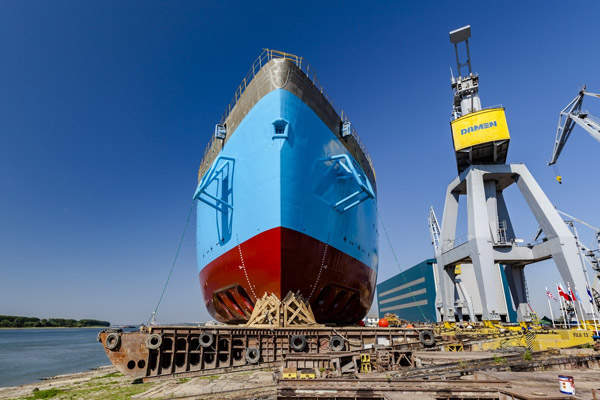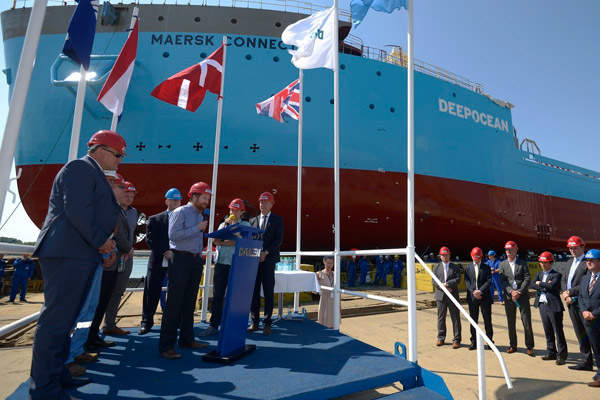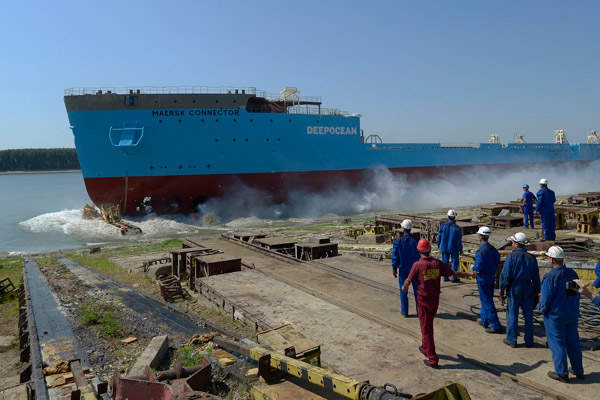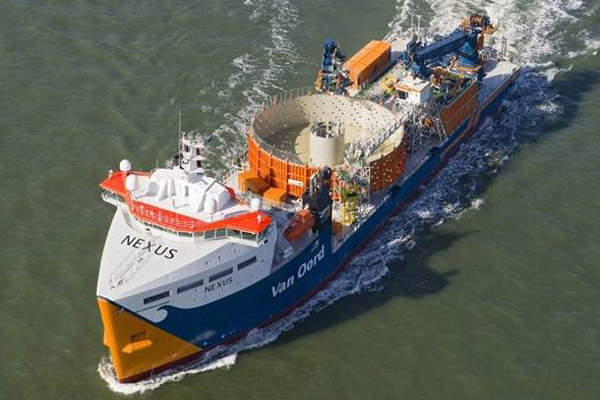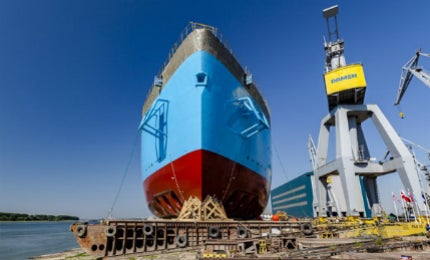
The Damen Offshore Carrier (DOC) 8500 is new-generation small heavy-lift vessel (HLV) developed by Damen Shipyards Group.
The multi-role vessel is designed to replace conventional tug barge operations in offshore loading/off-loading missions. The first ship based on the DOC 8500 design, Nexus cable-laying vessel, was delivered to Van Oord in December 2014.
Damen Shipyards Group received an order from Maersk Supply Service for the delivery of a DOC 8500 vessel in March 2014.
Christened Maersk Connector, the vessel was launched in July 2015. It was delivered in February 2016. Maersk Supply Service operates the vessel for DeepOcean under a seven-year charter agreement.
DOC 8500 design and features
DOC 8500 vessel incorporates a streamlined bow and slim hull form. The state-of-the-art design provides good seakeeping abilities in head seas and minimises fuel consumption.
The vessel has a modular platform that allows for the installation of cable-laying and other support modules according to customer requirements. Modules can be attached in the building phase or retrofitted during specific operations.
The vessel can be configured with a Damen deep-dredge system. It also supports the installation of bunkering facilities to replenish offshore vessels/facilities at oil and gas fields, and support crew transfers. It can accommodate up to 90 personnel.
DOC 8500 has an overall length of 138.35m, cargo deck length of 85.2m and a moulded breadth of 27.5m. The depth to main deck and design draught of the ship are 9m and 5.8m respectively, and the deadweight tonnage is 9,300t.
Desk equipment and systems
The large deck offers an unobstructed area of more than 2,300m². It offers 20t/m² load capacity and superior roll-on/roll-off (Ro-Ro) capability. It can be installed with a knuckle-boom crane, a stiff boom crane, a cable-laying installation and support structures for A-frame and electric-hydraulic harbour mooring winches.
DOC can be equipped with a DP2/DP3 system for conducting offshore loading/off-loading operations. It can be installed with additional retractable bow thrusters and/or installed power to optimise the DP2 functionality.
Onboard navigation and communication systems meet global maritime distress and safety system (GMDSS) area A3 requirements.
Auxiliary equipment and systems aboard the vessel include an efficient ballast system, sewage treatment plant, freshwater generators, a bilge water separator, a firefighting system, auxiliary and emergency gen sets, and separators for heavy fuel oil (HFO), marine gas oil (MGO) and lubricating oil (LO).
DOC 8500 is also fitted with tanks for holding HFO, MGO, lube oil, potable and ballast water, as well as dirty oil, sludge, sewage and bilge water.
A helicopter deck on the vessel supports the operations of a medium-sized rotorcraft such as Sikorsky S76 and S92.
Accommodation facilities
The sturdy design of the FSC 1605 makes it the most suitable and preferred workhorse for operation in offshore oil and gas industry.
Designed to the latest ergonomic and comfort standards, each cabin has access to the internet, radio and TV. A flexible, standalone accommodation unit of 30 people can also be installed to increase the total number to 60 people under SPS regulations.
Propulsion of the DOC 8500
The power plant of the DOC 8500 integrates two MAK 8M25 2,560kWe and two MAK 6M25 1,912kWe main diesel engines driving two 2,100kW azimuth thrusters and three 1,250kW tunnel thrusters.
The propulsion system ensures an average speed of 11.7k and endurance of 65 days.
DOC has a zero dumping certification, and a green passport, which provides the inventory of potential hazardous materials onboard.
Fuel tanks are protected with cofferdams, and the vessel can be optionally equipped with scrubbers to gain the benefits of using lower-priced HFO and reduce emissions. The vessel can be equipped with a LNG propulsion system, including fixed or containerised LNG storage tanks.

